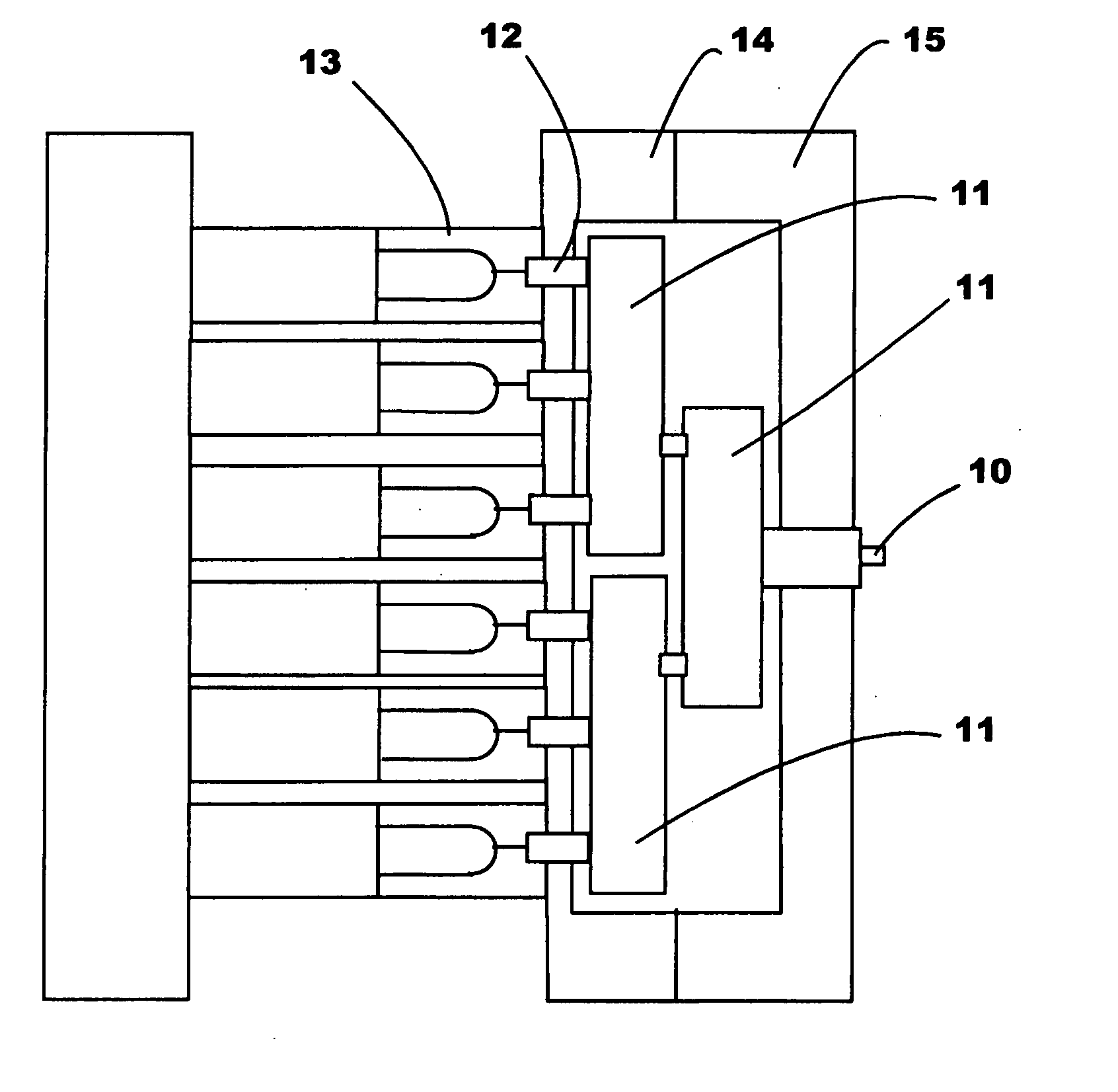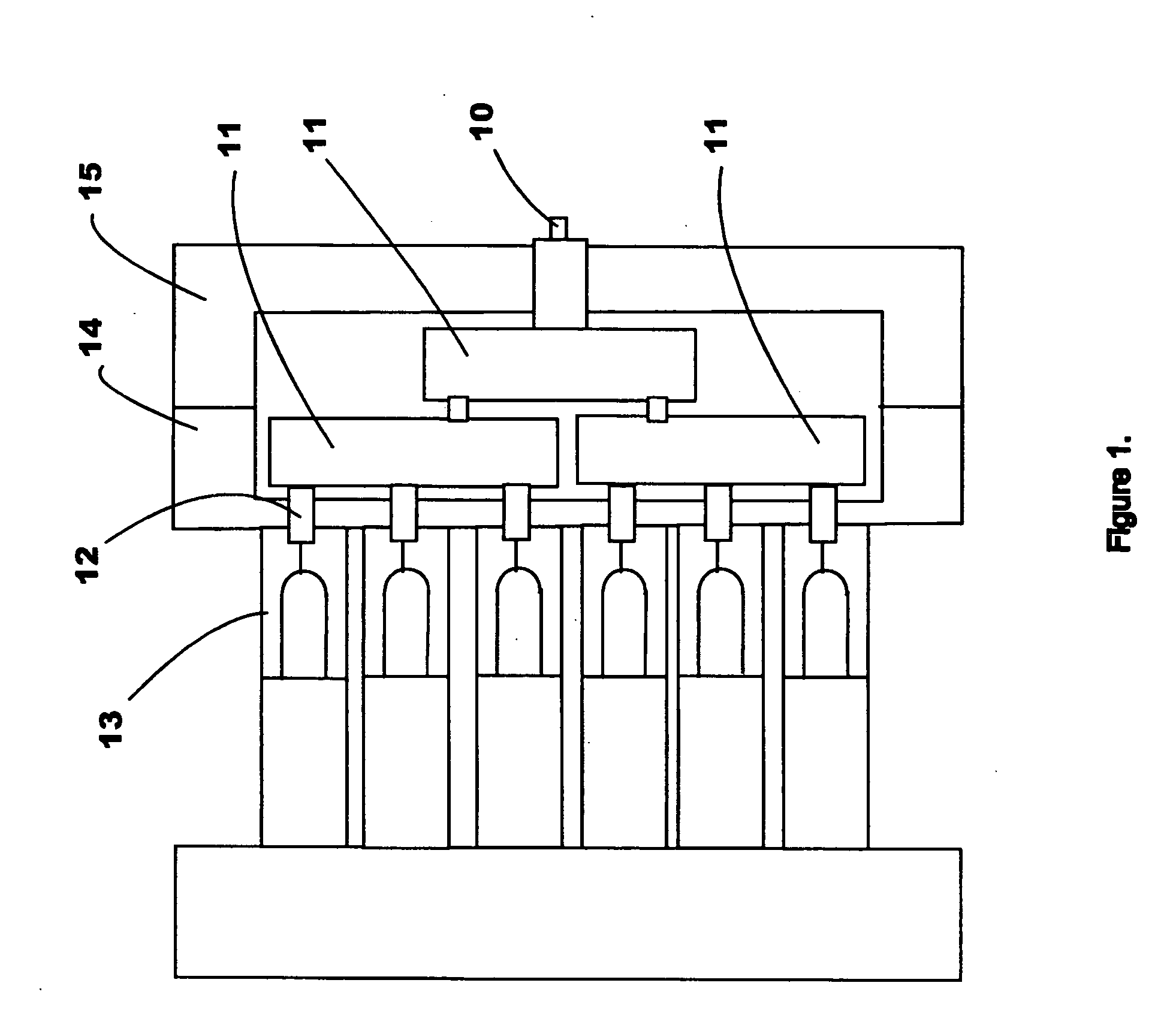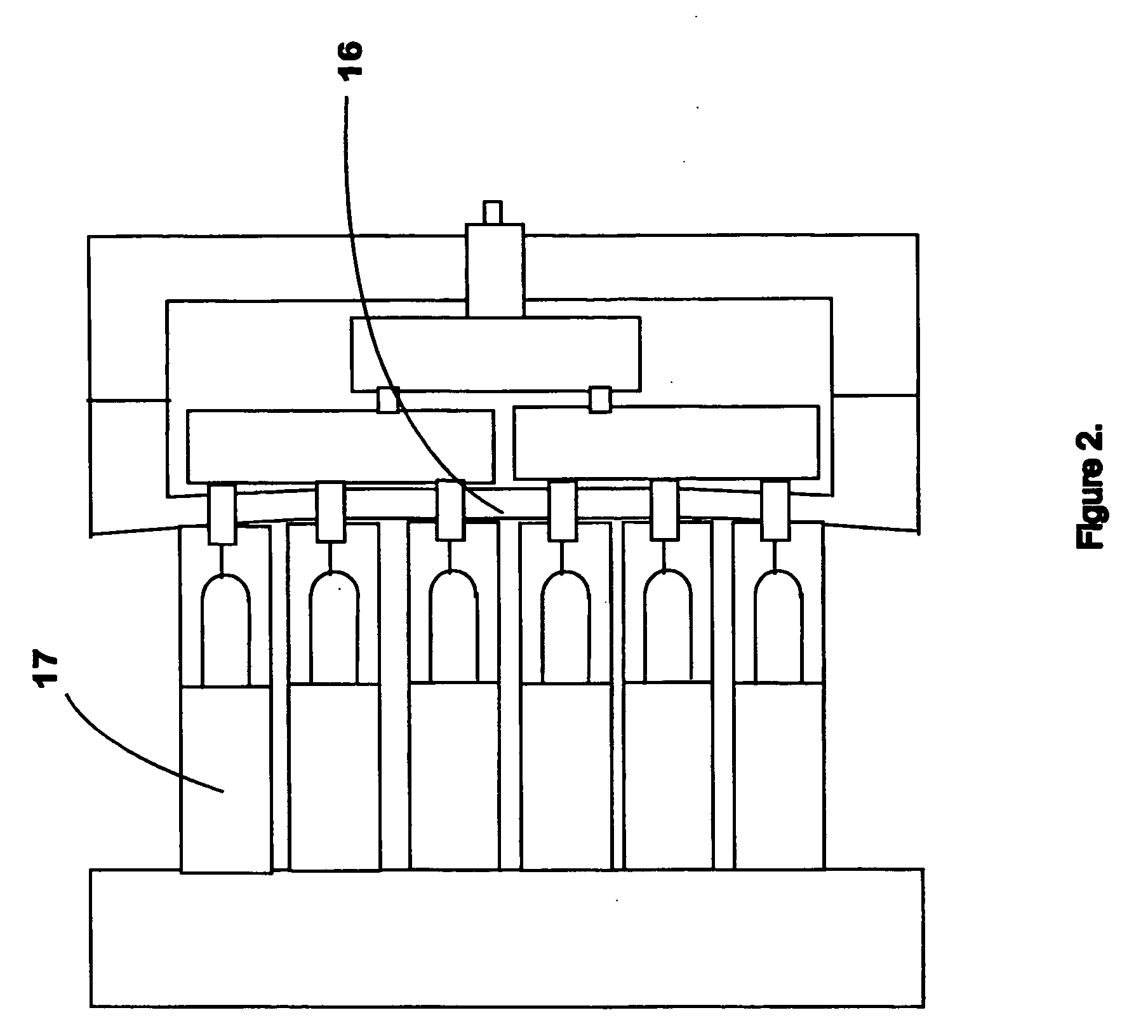Method and apparatus for countering mold deflection and misalignment using active material elements
a technology of active material elements and countering molds, applied in the direction of manufacturing tools, electrical/magnetically converting sensor outputs, and mechanically converting sensor outputs, etc., can solve the problem of not being able to disclose the actual measurement and then correct the shifting, and achieve the effect of effective and efficient means of detecting
- Summary
- Abstract
- Description
- Claims
- Application Information
AI Technical Summary
Benefits of technology
Problems solved by technology
Method used
Image
Examples
first embodiment
2. The Structure of the First Embodiment
[0023] The first preferred embodiment of the present invention is shown in FIG. 3, which depicts an injection molding machine preform molding stack 101 of the core lock style. The stack comprises a gate insert 120, a cavity 121, neck ring halves 122a and 122b, a core 123, and a core sleeve 124. The core sleeve 124 has a flange 125 through which several spring loaded fasteners (including, e.g., a bolt 126, a washer 127, and a spring washer (Belleville) 128) are used to fasten the sleeve to the core plate 129. The core 123 has an annular channel 130 in its base to accept an annular shaped piezoceramic element 131. The core plate 129 has a wire groove 132 to accept wiring connections 133 to the element 131. The piezoceramic element 131 may also be driven by wireless means (not shown).
[0024] The piezo-electric element 131 may comprise a piezo-electric sensor or a piezo-electric actuator (or a combination of both), and may, for example, comprise a...
second embodiment
4. The Structure of the Second Embodiment
[0033]FIG. 4 shows an alternate preform molding stack 102 for a cavity lock style stack. The stack comprises a gate insert 150, a cavity 151, neck ring halves 152a and 152b, and a core 153. The core 153 has a flange 155 through which several spring loaded fasteners (e.g., a bolt 156, a washer 157, and a spring washer (Belleville) 158) are used to fasten the core 153 to the core plate 159. The core 153 has an annular channel 160 in its base to accept an annular shaped piezoceramic insert 161. The core plate 159 has a wire groove 162 to accept wiring connections 163 to the element 161, and the wiring connections 163 may optionally be connected to a controller 171. There is a similar assembly gap 170, typically less than 0.1 mm.
[0034] Optionally, one or more separate piezoceramic sensors may be provided to detect pressure caused by positional changes within the mold. These sensors may also be connected by conduits 163 to the controller 171. The...
third embodiment
6. The Structure of the Third Embodiment
[0037]FIG. 5 illustrates one problem that can occur when molding thinwall parts using a molding stack. If the incoming resin flow does not fill the cavity exactly symmetrically (that is, if the flow takes a preferential course 190 when flowing down the sidewalls), resin can exert an unbalancing side force on the core 191, as indicated by arrow A, thereby causing the core to shift within the cavity 192. The subsequent molded part has an unequal sidewall thickness that can be sufficiently thin to cause the part to fail.
[0038] An embodiment for overcoming this problem is shown in FIGS. 6 and 7, which depict a thinwall molding stack 103. The thinwall molding stack 103 includes a cavity 180 and a core 181. The core has several spring loaded fasteners (e.g., a bolt 183, a washer 184, and a spring washer (Belleville) 185) that are used to fasten the core 181 to the core plate 182. A male taper 186 on the cavity is used to align the core 181 via fema...
PUM
| Property | Measurement | Unit |
|---|---|---|
| force | aaaaa | aaaaa |
| clamping force | aaaaa | aaaaa |
| responsive force | aaaaa | aaaaa |
Abstract
Description
Claims
Application Information
 Login to View More
Login to View More - R&D
- Intellectual Property
- Life Sciences
- Materials
- Tech Scout
- Unparalleled Data Quality
- Higher Quality Content
- 60% Fewer Hallucinations
Browse by: Latest US Patents, China's latest patents, Technical Efficacy Thesaurus, Application Domain, Technology Topic, Popular Technical Reports.
© 2025 PatSnap. All rights reserved.Legal|Privacy policy|Modern Slavery Act Transparency Statement|Sitemap|About US| Contact US: help@patsnap.com



